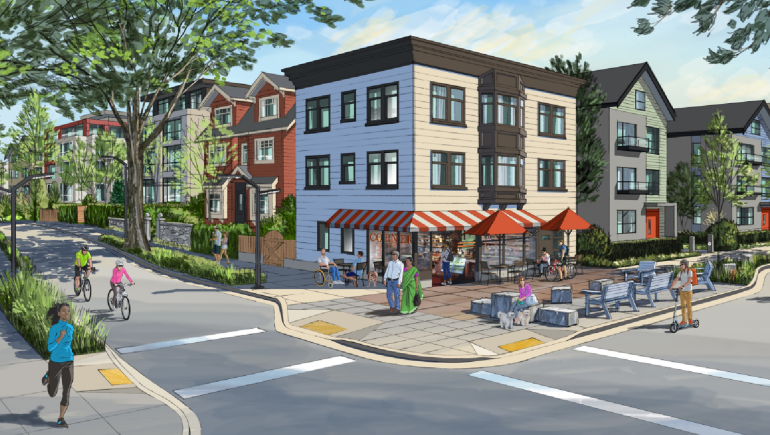The Vancouver Plan: Defining how the city will grow
At a glance (2 minute read):
- The Vancouver Plan is designed to accommodate an estimated 260,000 new residents expected to move to Vancouver in the next 30 years
- It includes supports for affordable housing and businesses, environmental initiatives, and more.

Summary
Housing
To accommodate the estimated 260,000 new residents expected to move to Vancouver in the next 30 years, density will be spread across all neighbourhoods and include new ground-oriented missing middle housing (multiplexes and townhouses), and for low and moderate-income households purpose-built rental and social housing located off busy main streets near transit, green spaces, schools, amenities, and services.
In multiplex areas, housing of 3-6 storeys will include a variety of mixed-use low-rise buildings and detached and low-rise housing.
Business
The plan creates opportunities for shops, services, and home-based businesses across the city.
Environment
The plan includes the “15-minute city principle” which ensures residents can walk or cycle to their jobs and daily activities. The plan will also restore the tree canopy, expand parks, and green networks, and protect waterways.

Consultation
Since 2019, the city has hosted a four-phase public engagement process including:
- 318,000 postcards mailed to business and residents city-wide;
- 152,000 webpage views on vancouverplan.ca;
- 25,000 survey responses from 12 online surveys that were available in at least six languages;
- 21,599 engagement contacts at open houses, pop-up events, and information sessions;
- 2,815 engagement contacts at workshops and meetings; and
- 118 youth workshops.
Read a summary of public engagement.
Findings from engagement sessions
| Areas of support | Areas of concern |
|---|---|
| More housing choice in all areas of the city. |
Impact of the plan on existing affordability. |
| Complete neighbourhoods – essential needs within close proximity, such as diverse housing options, a mix of shops and services, childcare facilities, libraries, rec centres, linked by pathways, parks and plazas. |
Delivery of amenities with future growth. |
| Job space – 90 per cent of residents to live near where they work. |
Potential changes to (or loss of) neighbourhood character and identity. |
| Climate solutions including green buildings, transportation, greenways, food systems. |
Limited time for draft plan engagement. |
Resources
- Read a summary of the Vancouver Plan (website)
- Read the Vancouver Plan PDF (85-page PDF)
- Read the staff report of the Vancouver Plan (230-page PDF)